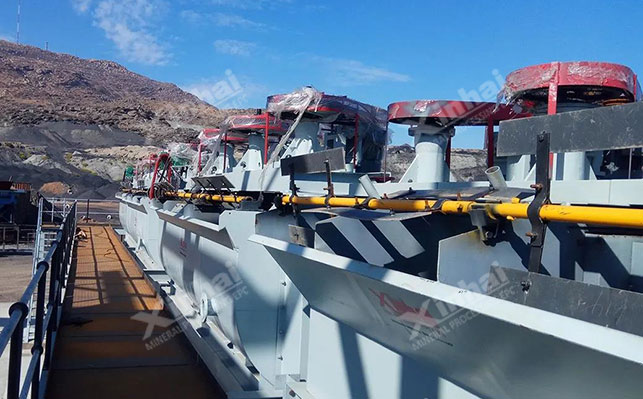Most scheelite deposits belong to the skarn type, with relatively fine grain size and often coexisting or coexisting with various molybdenum bismuth sulfide ores. According to the differences in ore types, scheelite can be divided into two categories: scheelite quartz (or silicate mineral) type and scheelite calcite fluorite type. Among them, the recovery of scheelite in the former is relatively easy, while in the latter, due to the more complex nature of the ore, the difficulty of mineral processing has increased. This is mainly because the floatability of scheelite and its coexisting calcium containing gangue minerals is relatively close, and tungsten itself is relatively fragile. So, when conducting sorting, flotation is usually the main method.

The flotation process generally includes two steps: coarse selection and fine selection. The main goal of rough selection is to maximize the recovery rate of scheelite, while fine selection is the key to obtaining qualified tungsten concentrate. In order to obtain qualified tungsten concentrate, both the roughing and selection processes need to strictly follow the process flow, often requiring multiple selections to achieve the desired effect.
The rough selection of scheelite aims to maximize the recovery of scheelite. In the rough selection stage, commonly used methods include lime flotation and sodium carbonate, although both belong to pH adjusters, their principles are not the same.
Sodium carbonate method: The Na ₂ CO ∝ in it can serve as both a pH adjuster and a dispersant for the slurry. It can also precipitate metal ions in the slurry that have adverse effects on flotation, thereby improving the flotation index of tungsten ore.
Lime method: The main function of lime is to utilize the adsorption of Ca ² ⁺ on the surface of gangue minerals, change the surface potential of gangue minerals, and then add inhibitors such as water glass to suppress gangue minerals, thereby achieving the separation of tungsten and gangue minerals.
The key to the selection of scheelite lies in maximizing the separation of tungsten ore and gangue minerals, and improving the grade of tungsten concentrate. The selection process of scheelite after rough selection mainly includes heating method and room temperature method.
Heating flotation of scheelite concentrate: This method is more suitable for mines with high calcium mineral content and low tungsten content. The specific steps are to first concentrate the roughly selected concentrate, so that the concentrated slurry concentration is between 60% and 70%. Then, a large amount of water glass is added and stirred at high temperature. Finally, the slurry is diluted and subjected to room temperature flotation. In this process, the separation speed of the collector film on different mineral surfaces varies, resulting in different inhibitory properties of the minerals, thus achieving mineral separation. However, due to the need for heating, the working environment temperature is high, the environment is poor, the cost is also high, and the process is complex, making the operation difficult.
Room temperature flotation of scheelite concentrate: This method is commonly used in the flotation of quartz vein mines. The slurry is usually adjusted with alkaline media (sodium hydroxide, sodium carbonate), metal salts are used as activators, water glass is used as suppressants, and a mixed collector is used to complete the flotation; In addition, water glass can be combined with macromolecular organic inhibitors such as baking gel and tannins as combination inhibitors, and mixed collectors can be used to achieve flotation.
The above is an introduction to the two methods of rough selection and fine selection for scheelite ore. In actual beneficiation plants, due to the complex nature of scheelite ore, the processing conditions for each process are different. Therefore, it is recommended to conduct beneficiation experiments and design suitable scheelite beneficiation process plans through experimental analysis to improve its beneficiation efficiency.